Celebrating a Bookish Romance
 |
| A guide at the National Library of China introduces the restoration process for copies of Tianlu Linlang, a royal book collection of the Qing Dynasty (1644-1911), at an ongoing exhibition in Beijing. [China Daily/Jiang Dong] |
Restorers save ancient works as they usher in a new chapter of appreciation.
The seventh day of the seventh month in the lunar calendar, known as Qixi in China, is widely seen as the Chinese counterpart of Valentine's Day. But ancient Chinese literati had their own romantic story, literally. On this day, they would display their book collections and bathe them in sunshine.
Scientifically, this method known as shaishu ("to dry the book under the sun") would help prevent moisture and bugs and better protect the pages, but it was also seen as a ritual to show off the literati's taste and knowledge in a tangible way.
On this year's Qixi Day, which fell on Thursday, a special shaishu event opened at the National Library of China. Though the books were showcased under artificial light instead of the sun, the first public appearance of these precious books might demonstrate not only an individual literati's taste, but a country's determination to prolong cultural lineage.
The exhibition displays 85 restored copies of Tianlu Linlang, a former royal book collection of the Qing Dynasty (1644-1911).
Many of these precious editions were once in a terrible state of disrepair. However, thanks to the eight-year effort of a team of restorers, their glamour has returned.
"Through the exhibition, we'd like visitors to not only see the important ancient books, but also understand the techniques used to fix them," Zhu Zhenbin, a leading restorer of Tianlu Linlang, says.
Tianlu was the name of the Han Dynasty (206 BC-AD 220) royal library — considered the earliest national library — and linlang is a term often used to refer to "precious books" in traditional Chinese culture.
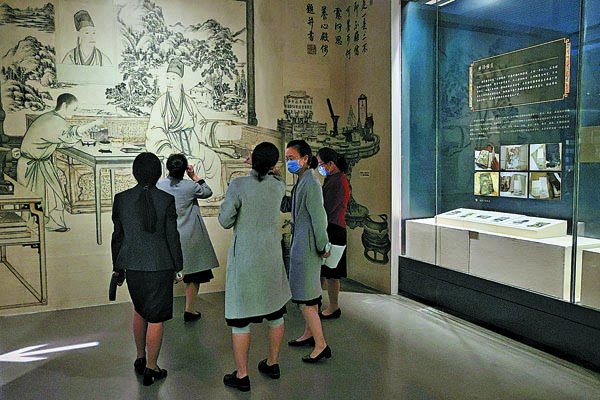 |
| Eighty-five copies selected from the recently restored Tianlu Linlang are on display in the National Library of China in Beijing. The exhibits include printed editions from the Song Dynasty (960-1279). [China Daily/Jiang Dong] |
In 1744, Emperor Qianlong of the Qing era, an antique and art enthusiast, ordered scholars to search for and include the finest ancient books, ranging from the Song (960-1279) to Ming (1368-1644) dynasties, which were scattered in studies across the Forbidden City, in this collection. A total of 664 volumes were then categorized.
However, these books suffered fire damage in 1797. Emperor Jiaqing, Qianlong's son, launched a program to reestablish the collection within seven months.
After the Qing Dynasty fell, continuous conflicts and social upheavals in the early 20th century took a toll on the books. Some were lost, some were damaged and some were taken across the Taiwan Straits in the aftermath of the civil war. When 279 volumes of Tianlu Linlang, or 3,500 copies, entered the warehouse of the national library, over half of them were at least partially damaged, by mold, bugs, or just by time.
Led by Zhu, who has about 40 years of experience fixing ancient books, a comprehensive restoration project to save the fading pages was launched in 2013. It was finally completed at the end of last year.
"Repair may only be 30 percent of our daily work," Zhu says. "The rest of the time is all about how to regain the original appearance of these books. It was really tricky in a restoration project like Tianlu Linlang. The utmost patience and a scrupulous attitude is needed."
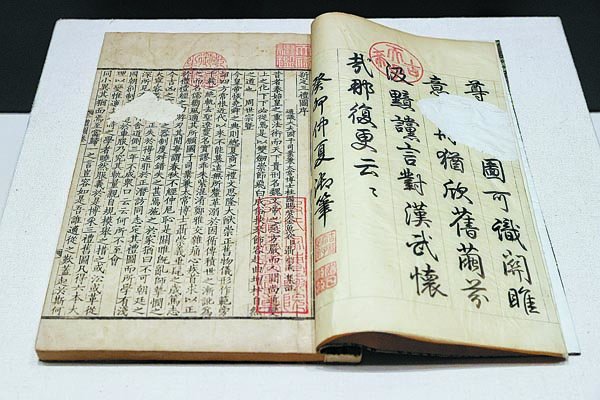 |
| Part of the collection of books exhibited at the National Library of China. A comprehensive restoration project saving the delicate pages was launched in 2013, and the work was only completed at the end of last year. [China Daily/Jiang Dong] |
Unlike other sets of ancient books, which used a uniformed format and the same materials, Tianlu Linlang was miscellaneous due to the wide time span of the source material. In this collection, the pages varied in their composition greatly, and some were even made of silk.
"That situation throws up a huge challenge," Zhu says. "We have to draft a tailored plan for each copy."
Restorers only use glue that is handmade by themselves, for fear that the chemicals in factory made adhesives would further damage the pages. To dye the patched paper to match the yellowing color of the original pages, various kinds of natural materials, including precious Pu'er black tea, were used.
"However, for such a cultural treasure, all the diligent work was worthwhile," Zhu says.
Viewing the exhibited books selected from Tianlu Linlang, Zhu feels relieved.
"When handling the broken pages, it's like we're preparing a funeral for them," he says. "But the consistent work of the restorers has brought about a second life for the books."
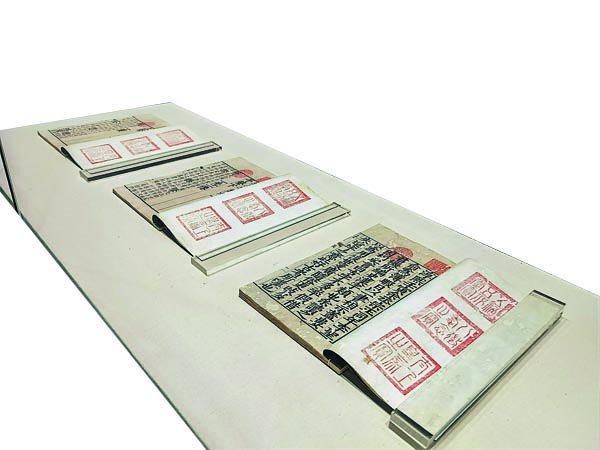 |
| Part of the collection of books exhibited at the National Library of China. A comprehensive restoration project saving the delicate pages was launched in 2013, and the work was only completed at the end of last year. [China Daily/Wang Kaihao] |
Among the exhibits of the ongoing event at the National Library of China, some are household names.
A rare Song Dynasty print edition of Zizhi Tongjian (Comprehensive Mirror to Aid in Governance), a pioneering reference work in Chinese historiography, is a highlight of the exhibition. An edition of historical documentation, Book of Han, printed in 1305, was also resurrected from its damaged state. Some of the books were also consecutively owned by many renowned collectors and thus have great significance for academic studies.
Perhaps, through the exhibited tools and a view of the actual restoration studio displayed in the gallery, visitors can understand how these treasures were rescued.
Since 2019, echoing a proposal by the National Library of China, Qixi has become a regular occasion for libraries across China to resume the shaishu tradition, like in ancient times, and numerous ancient books that have been gathering dust in warehouses get a chance to be seen by the general public. About 200 libraries in the country have joined the program, and more than 300 relevant events, including exhibitions and lectures, have been organized.
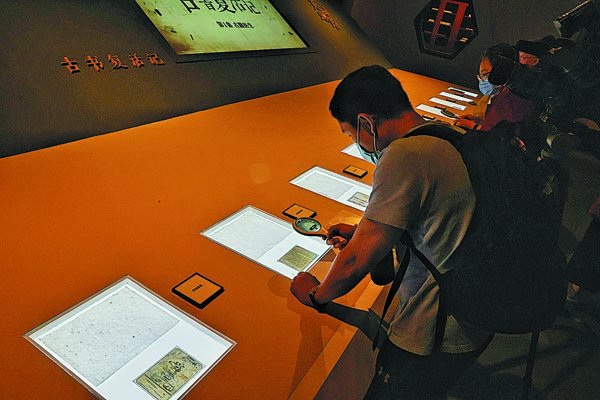 |
| Eighty-five copies selected from the recently restored Tianlu Linlang are on display in the National Library of China in Beijing. The exhibits include printed editions from the Song Dynasty (960-1279). [China Daily/Jiang Dong] |
(Source: China Daily)
Please understand that womenofchina.cn,a non-profit, information-communication website, cannot reach every writer before using articles and images. For copyright issues, please contact us by emailing: website@womenofchina.cn. The articles published and opinions expressed on this website represent the opinions of writers and are not necessarily shared by womenofchina.cn.


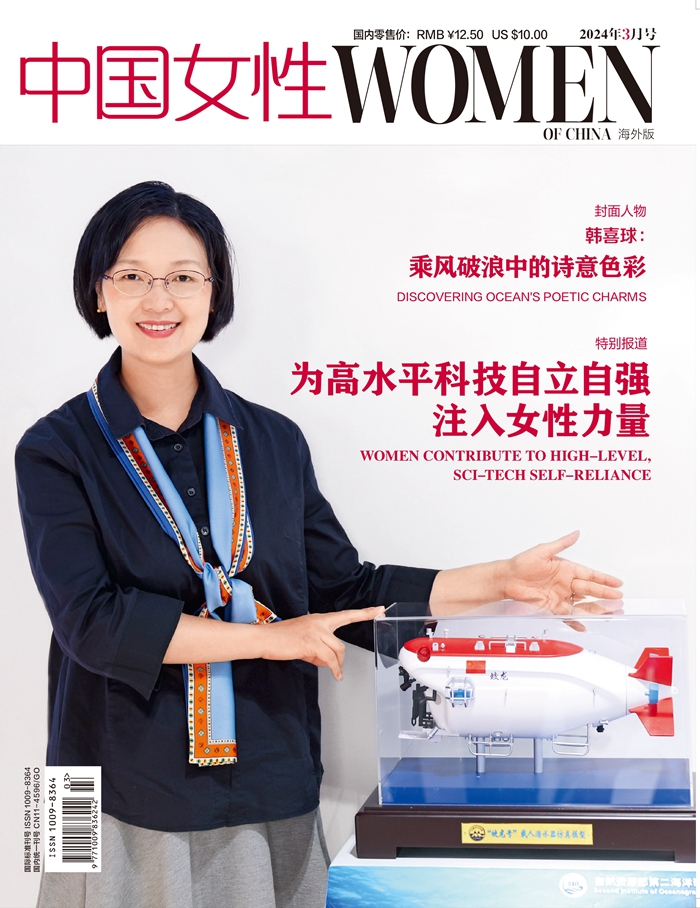

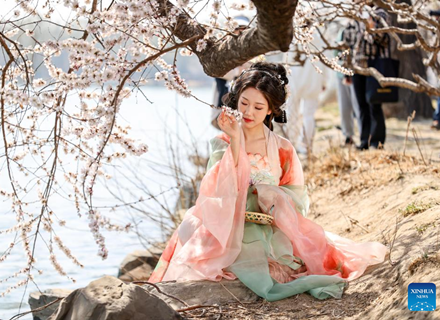



 WeChat
WeChat Weibo
Weibo 京公网安备 11010102004314号
京公网安备 11010102004314号